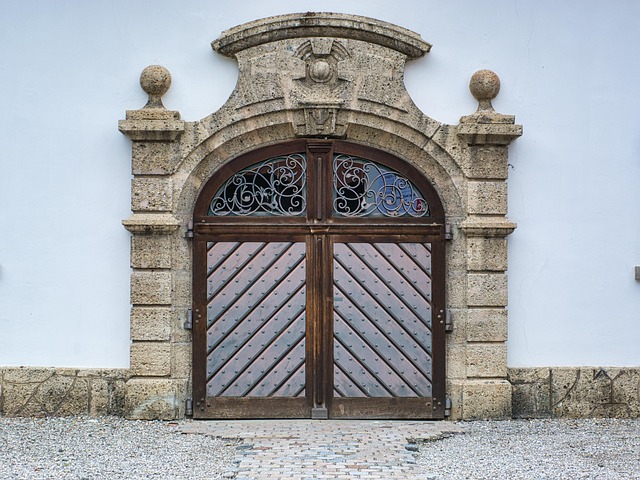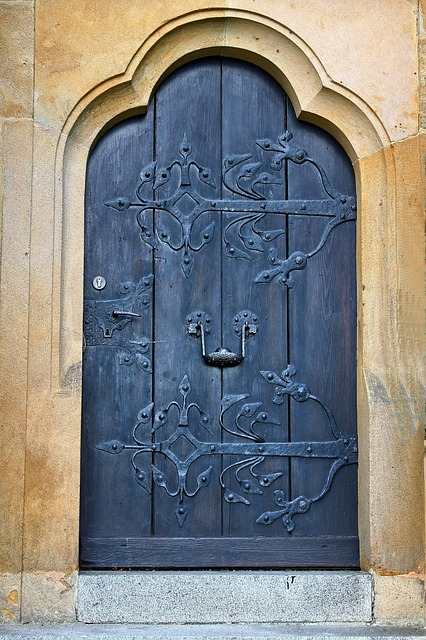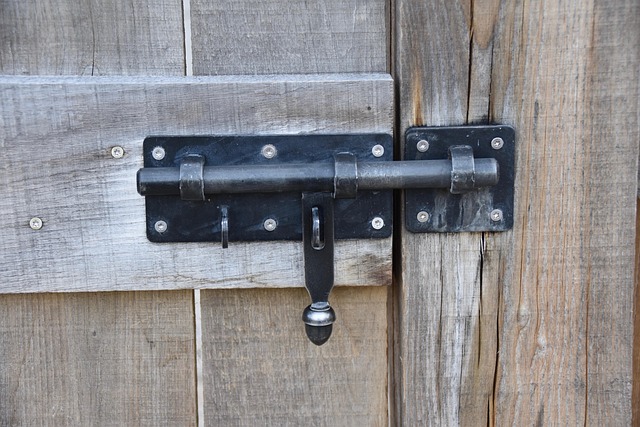Revolutionize Your Entry: Low-Maintenance, Weatherproof Vinyl Doors
In a quest for low-maintenance, efficient solutions, homeowners increasingly opt for weatherproof do…….
Introduction
In an era where energy conservation and sustainable living are becoming increasingly paramount, the quest for energy-efficient solutions is at the forefront of innovation across various sectors. Among these, “Energy-Efficient Door Solutions” stand out as a critical component in the broader mission to reduce energy consumption, lower greenhouse gas emissions, and enhance overall building performance. This comprehensive article delves into the intricacies of energy-efficient doors, their global impact, economic implications, technological advancements, policy frameworks, challenges, real-world applications, and future prospects. Readers will gain a deep understanding of how these solutions are transforming the landscape of energy efficiency and what they can expect as we move forward in this green revolution.
Understanding Energy-Efficient Door Solutions
“Energy-Efficient Door Solutions” encompass a range of technologies and designs aimed at minimizing energy loss through doors. These solutions are integral to maintaining temperature control within buildings, thereby reducing the reliance on heating, ventilation, and air conditioning (HVAC) systems. The core components of these solutions include advanced materials for door construction, high-performance seals, innovative glazing options, and smart technologies that monitor and optimize energy usage.
Historically, doors have been a necessity rather than a focus for energy efficiency. However, as awareness of energy consumption’s environmental impact grew, so did the development of energy-efficient door solutions. These doors are not just about insulation; they also incorporate passive solar design principles and adaptive thermal properties to respond to changing external conditions.
The significance of these solutions lies in their ability to contribute to a building’s overall energy performance, leading to reduced carbon footprints and increased occupant comfort. They fit within the broader landscape of sustainable building practices, which are increasingly mandated by regulations and sought after by environmentally conscious consumers.
Global Impact and Trends
The global impact of “Energy-Efficient Door Solutions” is profound, as they play a pivotal role in the energy performance of buildings worldwide. Different regions face unique challenges due to varying climates and energy demands, leading to diverse trends in the adoption of these solutions.
In colder climates like Scandinavia, energy-efficient doors are crucial for maintaining warmth inside buildings. In contrast, countries with hot desert climates, such as those in the Middle East, require doors that can prevent heat from entering and allow cool air to remain within.
International trends show a growing adoption of these solutions, driven by stringent building codes, rising energy prices, and the increasing cost-effectiveness of energy-efficient options. The shift towards green building certification programs, such as LEED (Leadership in Energy and Environmental Design) and BREEAM (BRE Environment Assessment Method), further incentivizes the integration of energy-efficient doors into new construction and retrofitting projects.
Economic Considerations
The economic aspects of “Energy-Efficient Door Solutions” are multifaceted. Market dynamics reveal a growing demand for energy-efficient building products, including doors, which has led to increased competition and innovation in the industry. Investment patterns indicate a significant flow of capital into research and development (R&D), as well as into the construction sector, where these solutions can provide a substantial return on investment (ROI) through long-term energy savings.
Energy-efficient doors contribute to the overall economic systems by reducing the operational costs of buildings, thereby increasing their value and desirability. They also create jobs in manufacturing, design, installation, and maintenance, contributing to economic growth and development.
Moreover, these solutions can qualify building owners for various financial incentives, including tax credits, rebates, and reduced utility costs, making them a cost-effective investment. The long-term economic benefits of energy efficiency are becoming increasingly apparent, with the total cost of ownership for buildings with energy-efficient doors often being lower than that of traditional doors.
Technological Advancements
The technological landscape for “Energy-Efficient Door Solutions” is marked by continuous innovation and improvement. Key advancements include the development of materials with enhanced insulative properties, such as polyurethane foam cores or improved timber composites. Innovative glazing technologies, like double or triple-pane glass with low emissivity (low-E) coatings, have revolutionized the performance of door panels in terms of thermal resistance and solar heat gain control.
Smart technologies are also playing a role, with the integration of sensors and IoT (Internet of Things) devices that can adjust door performance based on real-time data, optimizing energy use and comfort levels. Additionally, the use of recyclable materials and manufacturing processes that minimize waste further contribute to the sustainability of these solutions.
The future potential of technology in energy-efficient doors is vast, with research ongoing into materials with superior insulating properties, self-regulating systems that adjust to environmental conditions, and even doors that generate power through integrated renewable energy technologies.
Policy and Regulation
A myriad of policies and regulations govern “Energy-Efficient Door Solutions” across different regions. These range from national building codes that mandate minimum R-values (a measure of insulation) to international guidelines for sustainable construction practices.
Governments worldwide are implementing stricter standards for energy performance in buildings, which directly impacts the design and functionality of doors. In some jurisdictions, these regulations are coupled with incentives for builders and homeowners to upgrade to more energy-efficient options.
Compliance with these policies not only ensures adherence to legal requirements but also positions businesses and building owners at the forefront of sustainable practices, potentially opening up new markets and enhancing brand reputation. The harmonization of standards across countries can further facilitate the global market for energy-efficient doors, encouraging innovation and reducing costs through economies of scale.
Case Studies
Several case studies illustrate the successful implementation of “Energy-Efficient Door Solutions” in various contexts. For instance, a housing development in Canada reported significant energy savings by using doors with triple-pane glass and polyurethane foam insulation. In a commercial office building in the United States, the replacement of traditional doors with high-performance, thermally broken doors resulted in reduced heating and cooling costs, contributing to a faster return on investment.
These real-world applications demonstrate the practical benefits of these solutions and provide valuable insights into their implementation, challenges faced, and strategies for overcoming them. They also serve as testaments to the potential for energy savings and environmental impact reduction when these doors are part of a comprehensive sustainability strategy.
Challenges and Opportunities
The adoption of “Energy-Efficient Door Solutions” comes with its set of challenges, including the higher upfront costs compared to traditional doors, the need for retraining workers in new installation and maintenance techniques, and the integration of these solutions into existing buildings. However, these challenges also present opportunities for innovation, job creation, and economic growth.
Opportunities abound for manufacturers, designers, and installers who can rise to the occasion by developing cost-effective, easily adaptable solutions that fit various building types and climates. The potential for cross-sector collaboration—between energy experts, architects, construction companies, and material scientists—is immense, with the promise of breakthroughs that could further enhance the performance and affordability of energy-efficient doors.
Future Outlook
The future outlook for “Energy-Efficient Door Solutions” is one of continued growth and evolution. As global awareness of energy consumption’s environmental impact intensifies, so does the demand for sustainable building products. The integration of these solutions into the construction industry is expected to be a key driver in achieving energy efficiency goals and reducing greenhouse gas emissions.
Innovations in materials science, smart technology, and design will likely lead to even more efficient and intelligent doors that can adapt to their environment, learn from occupant behaviors, and contribute to a building’s overall sustainability. The potential for these solutions to be part of a broader integration with renewable energy systems, such as solar panels or wind turbines, could further enhance their role in the green revolution.
The role of governments and international bodies will be critical in setting standards and providing incentives that encourage the adoption of these solutions. As regulations become more stringent, the market for energy-efficient doors is expected to expand, with a concomitant increase in competition, innovation, and market differentiation.
Conclusion
“Energy-Efficient Door Solutions” are not just a response to a growing environmental challenge but also a testament to human ingenuity and our ability to innovate for a more sustainable future. The solutions’ multifaceted benefits, including economic savings, environmental impact reduction, and the potential for job creation, underscore their importance in the context of global energy consumption and climate change mitigation.
As we move forward, it is imperative that all stakeholders—governments, industry professionals, consumers, and communities—collaborate to ensure these solutions are accessible, affordable, and widely adopted. The journey towards a more sustainable built environment is ongoing, with “Energy-Efficient Door Solutions” playing a pivotal role in this transformative era of green building and renewable energy.
References
For those interested in further exploring the topic of “Energy-Efficient Door Solutions,” the following references provide in-depth information and insights:

In a quest for low-maintenance, efficient solutions, homeowners increasingly opt for weatherproof do…….

Heat transfer through door frames significantly impacts energy efficiency and indoor comfort, especi…….

Solid-core doors are rising in popularity as an energy-efficient door solution, offering superior so…….

Energy-efficient patio doors, featuring advanced glass technologies like low-e coatings and argon ga…….

Modern French doors with advanced energy-efficient glass technologies offer both aesthetic appeal an…….

Weatherproof door designs are vital for energy-efficient homes, acting as strategic buffers against…….

Weatherstripping and door seals are cost-effective and eco-friendly solutions for enhancing energy e…….

Energy-rated exterior doors, particularly vinyl models, offer a popular and effective solution for h…….